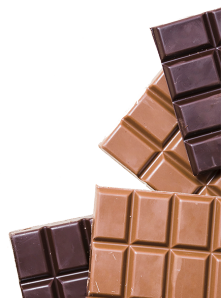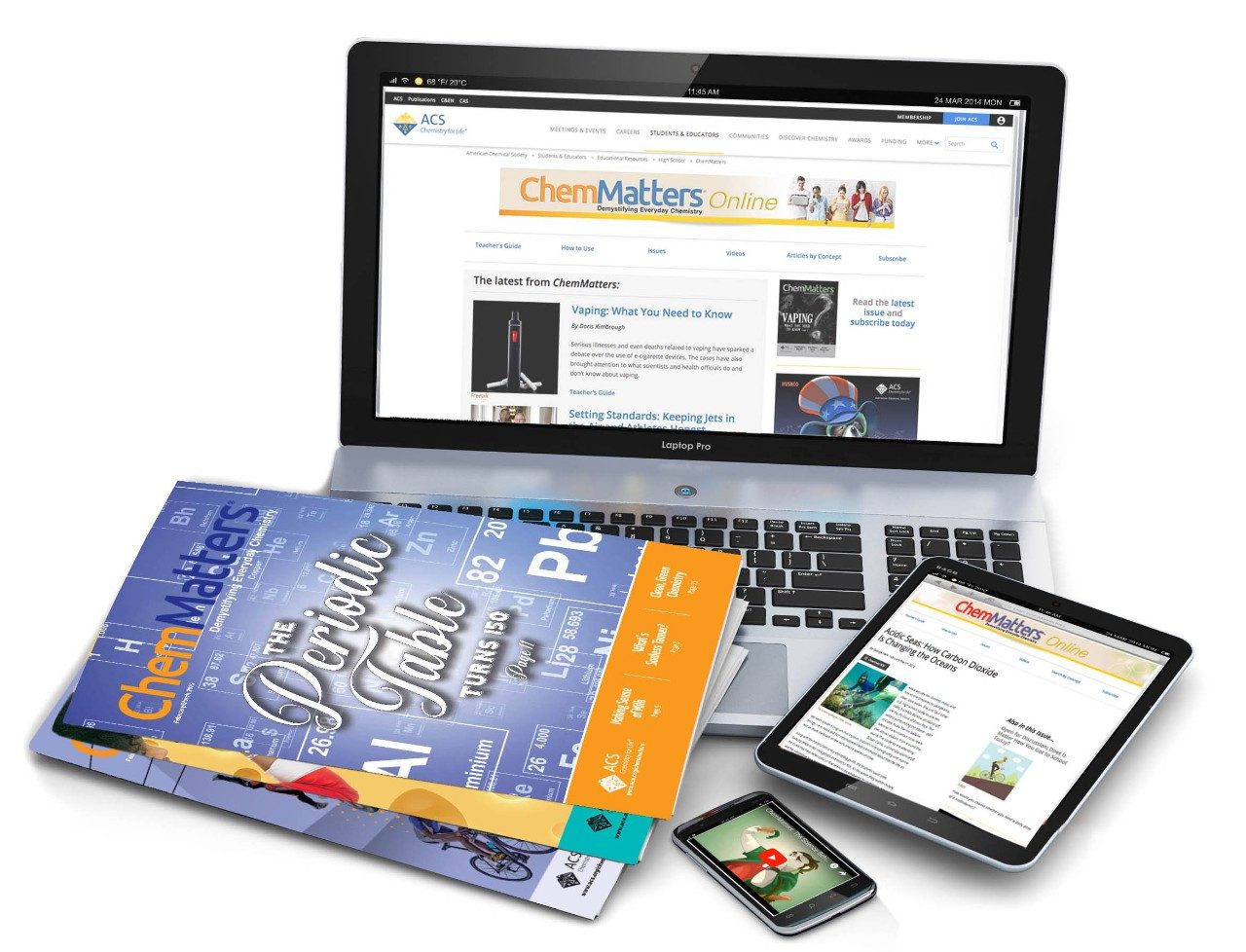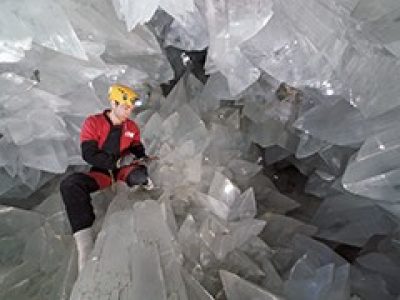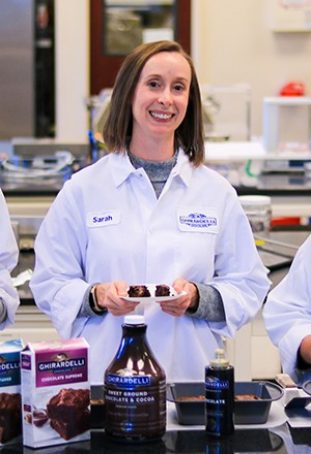The Sweet Life of a Candy Chemist
By Lis Gallegos February 2020
B.S.: Food Science, Penn State University
M.S.: Food Science, Cornell University
What she does now: Research & Development Manager, Ghirardelli Chocolate Company
Sarah Houle’s love for food science began with eggs.
As a sophomore in high school in Lancaster County, Pennsylvania, Houle was looking for an idea for her science fair project. She remembered hearing that if an egg is placed in boiling water for 10 seconds, it could be stored at room temperature for two months without rotting. Curious to find out whether this was true, Houle based her project on the rumor.
For help, she reached out to nearby Penn State University’s poultry science faculty. Not only did they agree to meet with her and provide references for her background paper, but they also introduced her to experts from the local egg industry for additional assistance. The experience was invaluable.
“I had a blast doing my science fair project—it became a three-year research project,” Houle says. “I won awards at the county level, and I ended up applying to and was accepted by Penn State, where I majored in food science.”
As a food scientist, Houle has spent her career developing familiar products: cereals at General Mills, caramels and gummy candy at The Hershey Company, and pancake and waffle mixes.
Now, Houle manages research and development at California-based Ghirardelli Chocolate Company. She and her team use science to create chocolate squares, cocoa powders, and drink mixes.
As for the egg experiment that led Houle to her career, did she find that an egg boiled for 10 seconds could keep for two months at room temperature?
“According to my study–yes,” she says. “But I still keep my eggs in the refrigerator. Better safe than sorry!”
—Lis Gallegos
What do you like most about being a food scientist?
I think it’s one of the coolest jobs ever, because we’re the people that come up with new food products. When you’re in the grocery store or a coffee shop and you see a new product or new flavor of chocolate, it’s because food scientists helped turn an idea into a reality.
How do you come up with new food products?
We work closely with our marketing partners to see what kind of products consumers might want. Sometimes we go on what we call “trend walks” to see what flavors are new and trending.
Then scientists work with ingredient suppliers and serve as the magic behind the development of a product. We’ll mix different ingredients in different amounts. For example, when we launched a blood-orange flavored, dark-chocolate bar, we had to think about whether we wanted any crunchy inclusions, pieces of freeze-dried fruit, flavored candy pieces, or no inclusions at all.
We get to try all these recipes, and we taste the product. When we think we’ve gotten the best product, a team tests it with consumers.
We also work with our manufacturing facility to make sure we can expand production.
Among the products that you’ve helped develop, what’s your favorite?
It would have to be Lancaster Caramel from The Hershey Company. When I started working there, I didn’t know much about sugar chemistry. A lot of sugar-based candy—like hard-candy, gummies, and caramel—start with similar ingredients, but the way you formulate and process them allows you to get different outcomes. I learned so much by developing this caramel, and it was great to see the product come to life. In the end, we launched the product in the United States and China.
Do you have any advice for high school students?
Science is a fantastic career. I would encourage you to figure out if there is an opportunity to include a passion that you have and blend it with science. For example, so many people are passionate about baking and cooking, but they don’t realize there’s an opportunity to blend it with science and make it a career.



Remember you can read ChemMatters in print and online, so you take it everywhere!
Also in this Issue...
Chemistry Takes to the Skies

By Brian Rohrig
The puffy white letters of skywriting look similar to the contrail streaks that you see trailing from airplanes. But a close look at the chemistry reveals what makes them so different.
Crystal Caves
By Emma Hiolski/Chemical & Engineering News

Natural crystals of mind-blowing proportions have captivated scientists since their discovery in a Mexican cave 20 years ago. Researchers have unlocked the secrets of the crystals’ past, and now work to secure their future.
*Available by subscription only


